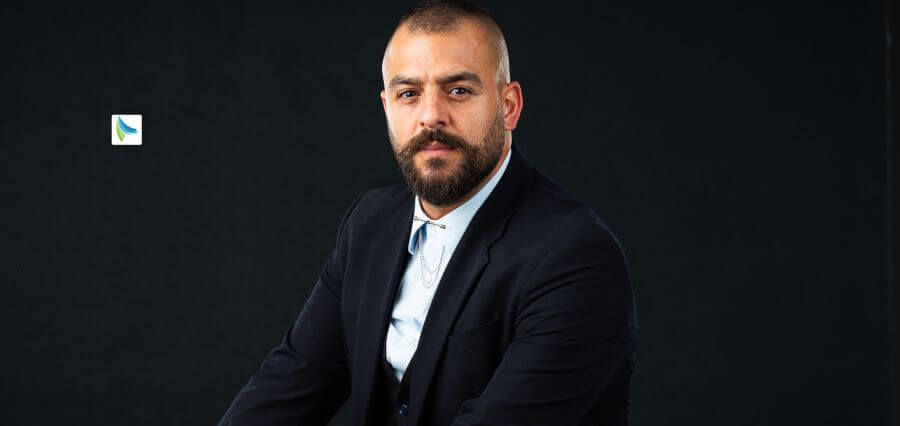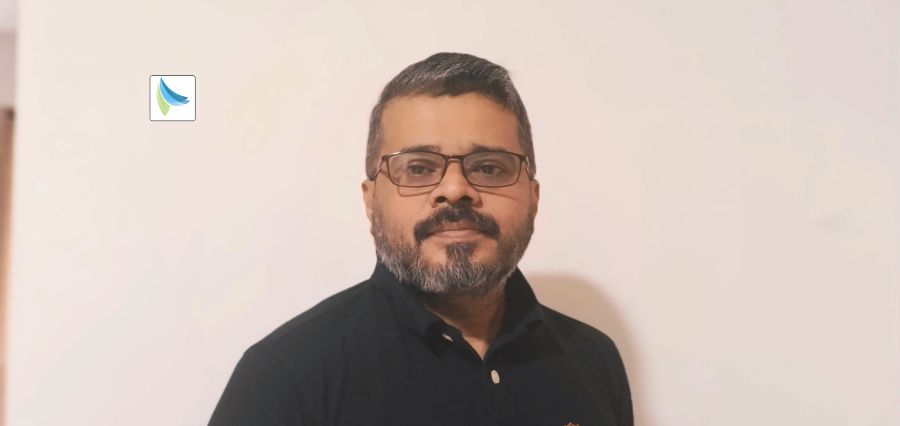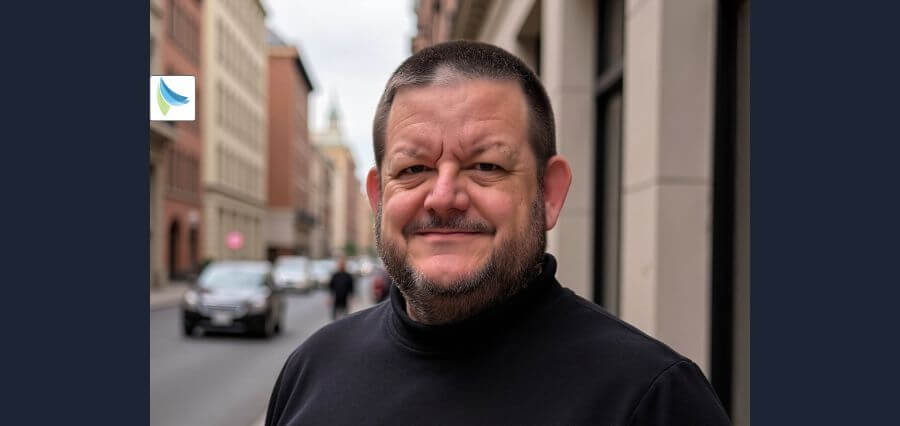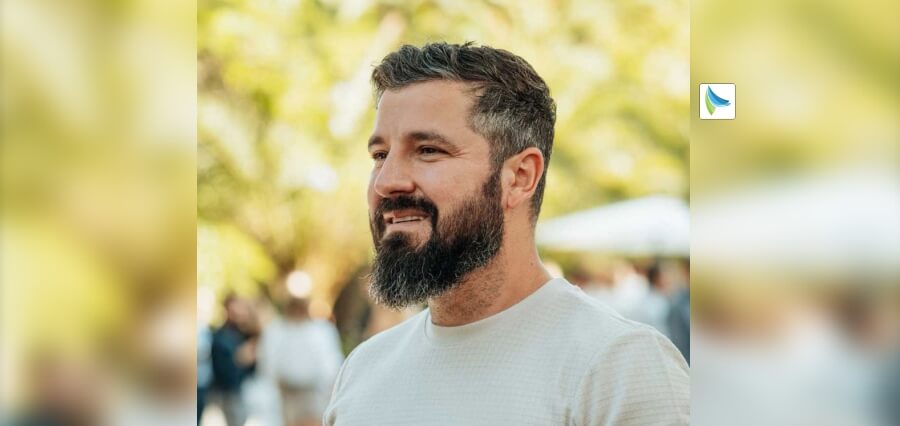There are trendsetters and visionaries who redefine the core of creativity itself. Dr. Karl Alexandre Chiniara belongs to the latter. Long before his peers collected diplomas, he was already crafting legacies, building and selling his first venture before graduation, a prelude to the entrepreneurial journey that would shape his life. His path has never been linear, nor comfortable; it has been defined by defiance, curiosity, and an unyielding pursuit of authenticity.
When he returned to Dubai, he briefly entered the world of wealth advisory, but the constraints of convention couldn’t hold back his creative instincts. What started as sketches on a kitchen table quickly became Karlito – Maison de Haute Joaillerie, a brand founded on conviction rather than commerce. His works challenge the expected vocabulary of luxury; they are sculptural representations of narrative, emotion, and identity, art pieces that whisper rather than shout.
He is the Founder and Creative Director of Karlito, Maison de Haute Joaillerie, and he links the art and business worlds with uncommon ease. Dr. Karl Alexandre Chiniara, guided by discipline, vision, and a passion for craftsmanship, is creating more than just a jewelry house; he is crafting a legacy in which imagination meets accuracy and beauty becomes inevitable.
The Early Victory
Dr. Karl Alexandre Chiniara’s entrepreneurial instincts surfaced early. Before university graduation ceremonies concluded, he had already built and sold his first company. The venture proved modest in scale but monumental in lesson, it taught him that ideas could materialize, that markets would respond to conviction, that exit strategies mattered as much as entry points.
Returning to Dubai, he stepped briefly into the family orbit, advising fortunes and navigating the intricate machinery of wealth management. Yet something fundamental resisted. The prescribed path felt too certain, too mapped. His creative spirit demanded wilderness, not well-worn trails.
The kitchen table became his drafting board. Initial sketches for what would become Karlito emerged there, rough geometries that refused the era’s trend-obsessed jewelry aesthetic. He envisioned sculpture first, jewelry second. He wanted pieces that felt discovered rather than designed, inevitable rather than invented.
Birth of a House
Karlito, Maison de Haute Joaillerie materialized from defiance in its purest form. Dr. Karl Alexandre Chiniara had grown weary of luxury’s predictability, of marketing budgets eclipsing imagination. The industry churned out logo-driven pieces while poetry and danger evaporated from high jewelry. He decided to restore both.
His founding principle carried deceptive simplicity is creating one-of-a-kind works anchored in emotion and narrative. Mass production held no appeal. Instead, he constructed a studio that privileges, private commissions, capsule collections, pieces so sculptural they command attention like museum installations.
The inspirations run deep and wide. Phoenician sirens whisper through certain designs. Desert falcons take flights in others. Venetian masks lend mystery to still others. He draws from architecture’s mathematical precision, mythology’s timeless resonance, and his own multicultural heritage. Each piece emerges as translation, myth into gold, memory into stone, geometry into emotion.
“I wanted to treat jewelry as sculpture that carries story, culture, and soul,” he explains. This philosophy attracted a specific collector to those seeking meaning over logos, narrative over novelty, permanence over passing fashion.
The Red-Carpet Whisper Campaign
Growth arrived not through advertising spend but through reputation, passed hand to hand like sacred text. Dubai’s creative community noticed first. Then pieces migrated to international stages like Cannes, Venice, the world’s most photographed moments.
Naomi Campbell wore Karlito. Marina Ruy Barbosa carried the house’s work onto global stages, including EMIGALA 2025. Nour Al Ghandour chose the brand. These weren’t paid partnerships or celebrity contracts; they represented organic recognition from icons who understood craft.
The house remains fiercely independent, a studio more than corporation, guided by artistry over quarterly targets. This autonomy allows him to maintain quality control and creative vision without external capital dictating taste. Building a profitable, respected house without sacrificing artistic integrity stands as achievement equal to any red-carpet moment.
The Discipline Behind the Dream
Dr. Karl Alexandre Chiniara dismisses the notion of work-life balance as mythology. “Discipline is real,” he insists. His life is operating through deliberate partition structured spaces protecting both artist and strategist.
When designing, nothing interrupts. Phones fall silent. The outside world evaporates. When handling finance or operations, creativity waits its turn. When protecting family time or solitude, he defends that territory ruthlessly.
This compartmentalization extends to business operations. He runs his creative enterprise with frameworks typically foreign to artisan fields, forecasting models, structural planning, measurable risk assessment. “I learned early that art cannot breathe in chaos,” he notes. Clear systems liberate his mind for design while ensuring financial viability.
Early setbacks became his graduate education. Cash drained. Suppliers vanished mid-project. Stones arrived slowly; orders arrived slower. Each crisis-built resilience and forced self-reliance. “A failed piece or slow quarter is not failure; it’s tuition,” he reflects. He no longer panics at friction; he studies it, adapts, moves forward.
Creativity demands oxygen, he believes. He travels alone, reads beyond luxury publications, cultivates relationships outside the industry. These practices prevent echo chamber thinking and introduce new textures into his work.
Personal relationships remain curated rather than neglected. “I value a small circle, family first, trusted friends next. Their honesty protects me from industry noise, grounds ambition in humanity,” he says.
The Polymath Entrepreneur
Jewelry anchors Dr. Karl Alexandre Chiniara’s identity, but his appetite for building extends further. He has created ventures in fintech and advisory services, each addressing inefficiencies he couldn’t ignore. Yet his diversification follows principle, not opportunism.
“I build companies the way I build a ring: form follows idea, but structure must hold forever,” he explains. Every enterprise must make sense, elevate, and last. His background exposed him to strategic thinking from childhood where deals dissected over dinner, governance explained, silent power mapped. This foundation taught him to respect risk without fearing it.
Money represents one language; art represents another. He speaks both fluently, translating between profit margins and creative vision with equal facility. This bilingualism remains rare in luxury, where creators are often lacking financial literacy and financiers rarely possess aesthetic judgment.
Driven by Inevitability
When asked about passion, Dr. Karl Alexandre Chiniara reframes the question. “Passion, to me, is not excitement but inevitability, I do this because I cannot avoid it.”
Ideas arrive uninvited, mid-flight, mid-night, mid-conversation, and demand form. Jewelry simply provides the chosen battlefield for this compulsion. What excites him is translation itself: converting abstract concepts into tangible beauty.
Defiance also fuels him. The luxury world rarely expects disruption from the Middle East. He enjoys proving otherwise. Building a house in Dubai that collectors treat with reverence comparable to Place Vendôme is a representation that quiet rebellion against geographic prejudice.
“Middle Eastern creativity deserves global respect not by imitation but by audacity and depth,” he states. His work provides proof that origin imposes no limits; only imagination does.
Forging Legacy
Dr. Chiniara’s strengths are in luxury entrepreneur requirements: vision, resilience, refusal to dilute craft. His ability to combine artistic sensibility with rigorous financial management remains exceptional.
He acknowledges weaknesses with equal candor. Impatience. Intolerance for mediocrity that can burn teams. He has learned to channel intensity without crushing momentum. Another past weakness are believing that he could execute everything personally. He now trusts talent, delegates strategically, builds quietly competent systems.
His advice to aspiring leaders cuts against contemporary wisdom: “Master your craft before chasing noise. Protect taste like an asset. Don’t seek consensus, it will sand your edges smooth.”
He urges future builders to understand economics as thoroughly as vision. “Vision without numbers dies young,” he warns. Above all, he advocates on creating what the world didn’t request but will eventually need.
The Quiet Before the Storm
Dr. Karl Alexandre Chiniara operates by a particular philosophy: “Success is quiet until it isn’t. Build in silence long enough that when the world notices, it feels inevitable.”
His mantra for growth combines precision with permission-free creation. “Own your narrative before someone else writes it. Build with precision, not permission. Protect your vision, master the economics beneath your dream, and let relevance follow you, not the other way around.”
He also warns against extremes: “Creation without discipline is vanity; discipline without creation is death. Find the point where both meet and stay there.”
For those building their own paths, his message remains consistent: refuse shortcuts, obsess over craft, know your numbers, don’t wait for permission. Legacy isn’t given, it’s forged.
From Dubai’s Jumeirah Village Triangle, Karl Alexandre Dr. Karl Alexandre Chiniara continues sculpting the future of haute joaillerie. His pieces grace international red carpets. His business model proves profitability and artistry need no conflict. His philosophy challenges industry orthodoxy.
The architect of desire builds on, one inevitable masterpiece at a time, proving that Middle Eastern creativity can command global stages, not through imitation, but through unapologetic originality and depth. In Dr. Karl Alexandre Chiniara’s hands, jewelry transcends decoration. It becomes architecture of emotion, sculpture of soul, rebellion forged in precious metal.














